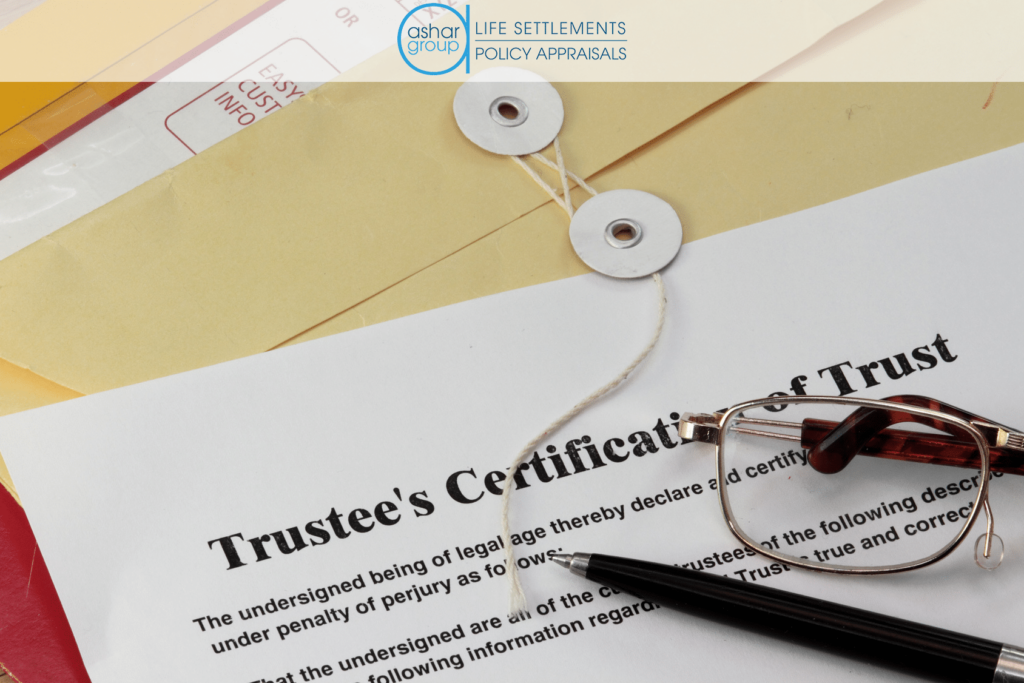 At Ashar, more than 50% of the life insurance policies we review are owned in Irrevocable Life Insurance Trusts, or ILITs.
At Ashar, more than 50% of the life insurance policies we review are owned in Irrevocable Life Insurance Trusts, or ILITs.
These are trusts set up specifically to own a life insurance policy. When the policy owner dies, the death benefit passes to the trust, rather than to an individual or company. The appointed trustee can then distribute the funds according to the policy owner’s, or grantor’s, wishes.
ILITs are generally set up for one of a few different reasons.
The first is for tax purposes, so that the death benefit intended for the beneficiaries is not included as an asset in the policy owner’s estate after they die.
Another is to protect the funds from the death benefit, in the case of the beneficiary being a minor or an irresponsible adult. The trustee, whether that be a spouse, a financial advisor, or another trusted family member or friend, can then distribute the death benefits according to the policy owner’s, or grantor’s, wishes after they die.
Finally, an ILIT can protect the death benefit funds in the case of a beneficiary’s being in litigation, or potentially involved in litigation in the future. If the benefit passed directly to the beneficiary, it would be considered an asset and would be subject to creditors, civil claims, etc.
With all these benefits to an ILIT, why would your client consider giving it up?
The policy may no longer be needed
When was the last time your client had their policy reviewed? If a life insurance policy is sitting in a trust, there’s a good chance that it’s being underfunded or even ignored.
For whatever reason, life insurance policies aren’t always thought of as assets, which is, of course, what they are. This leads to many policy owners carrying life insurance policies for years that either no longer fit their needs, or are costing them a fortune in premiums.
If your client has a policy in an ILIT, ask them when it was last reviewed. If it’s been a while, it may be worthwhile to review it again to make sure it’s still something your client needs.
If his or her children are grown and self-sufficient, if it’s currently un- or underfunded, or if the premiums are becoming unaffordable, it may be a good candidate for a life settlement.
Split death benefits are available
In some cases, a policy owner with an ILIT will still need life insurance coverage, but not as much as he or she originally planned for.
This could be due to the beneficiaries no longer needing as much of a safety net, or perhaps because of the increase in the Estate Tax Exemption and Portability, which has gone up significantly nearly every year since 1997.
It’s possible to keep some of the death benefit, while liquidating a substantial part of the policy. This is what one of our clients did with a $10 million, trust-owned Universal Life insurance policy.
First, the client’s advisor requested that we complete a secondary market valuation (SMV) to determine the policy’s fair market value. After that, the client decided to initiate the life settlement process, so we shopped the policy to various institutional investors.
Since we - and the client - knew the fair market value of the policy, we were able to obtain the best possible value for the client. This resulted in the client deciding to take a split death benefit offer, which included a $2.15 million death benefit for his beneficiaries, with no future premium payments.
Immediate liquidity may be needed
If a policy owner is suddenly in need of funds to pay for something like long-term care, medical bills, or home healthcare, a trust-owned life insurance policy can provide a lump sum payment that can be put toward those immediate needs.
The funds can even be converted into a long-term care settlement, which creates a trust that pays the long-term care facility directly on a monthly basis.
There are many reasons to consider a life settlement for an ILIT-owned life insurance policy. To read more about life settlements work, read “Why You Should Discuss a Life Settlement with Your Client in 2017.”
